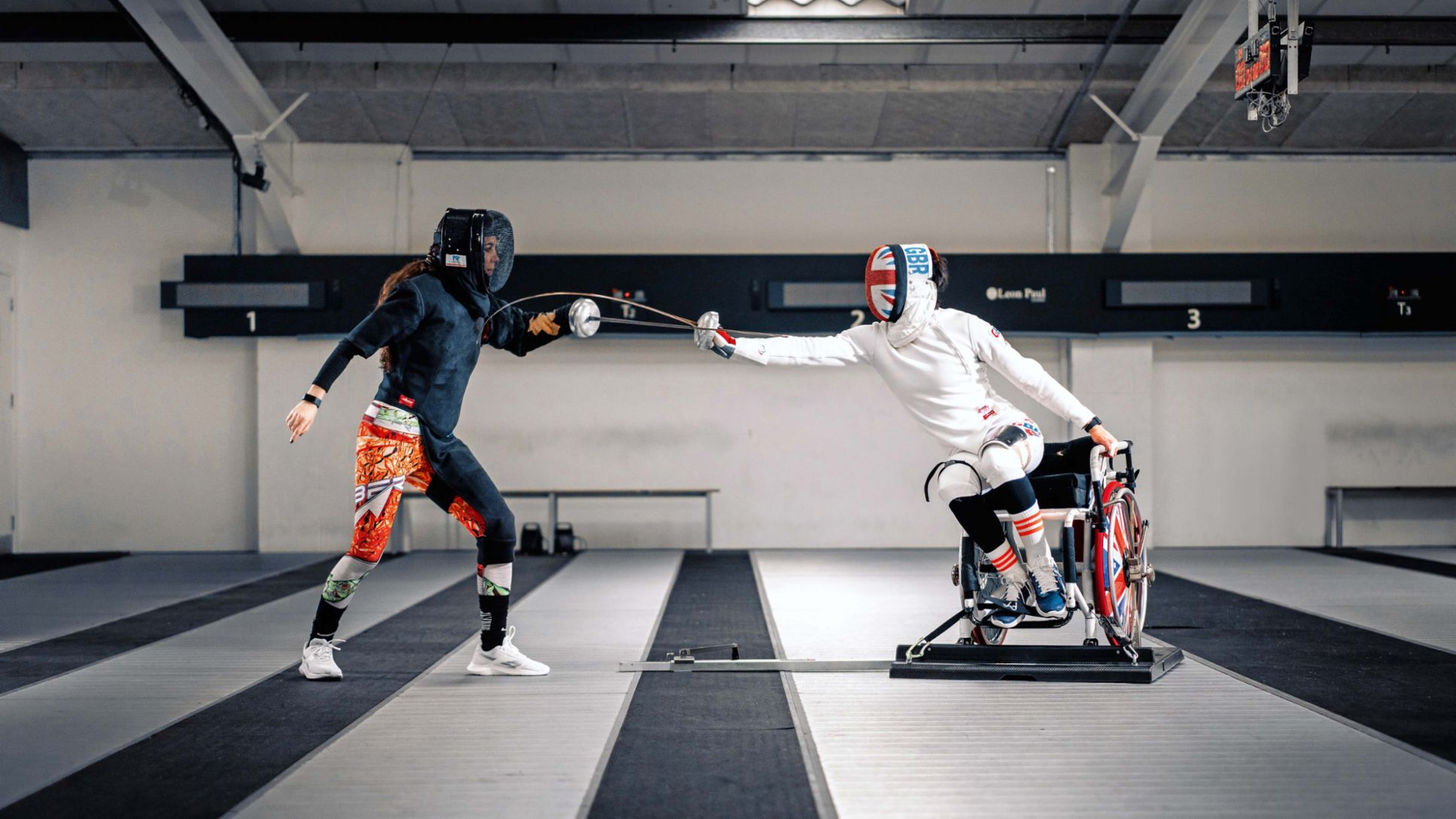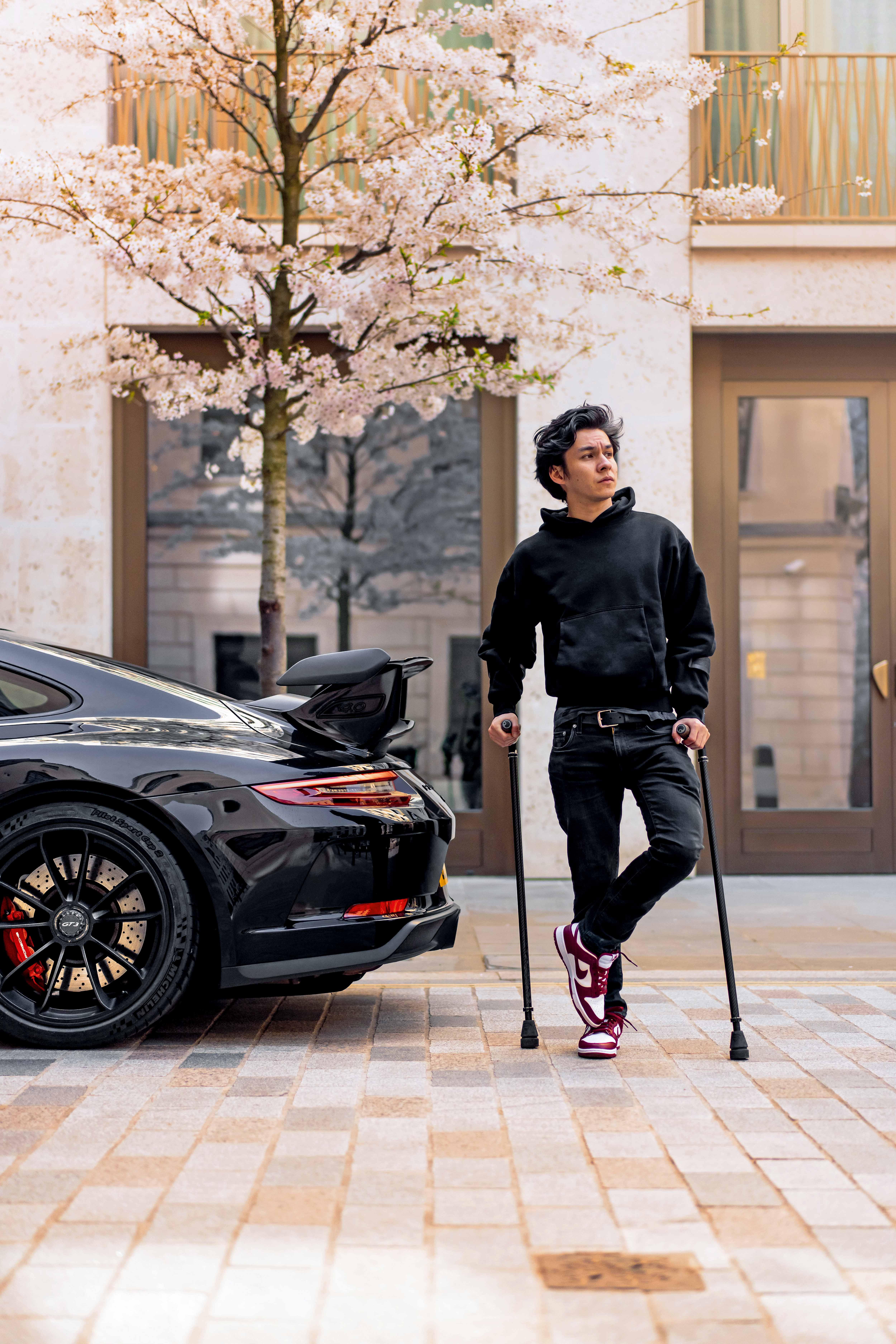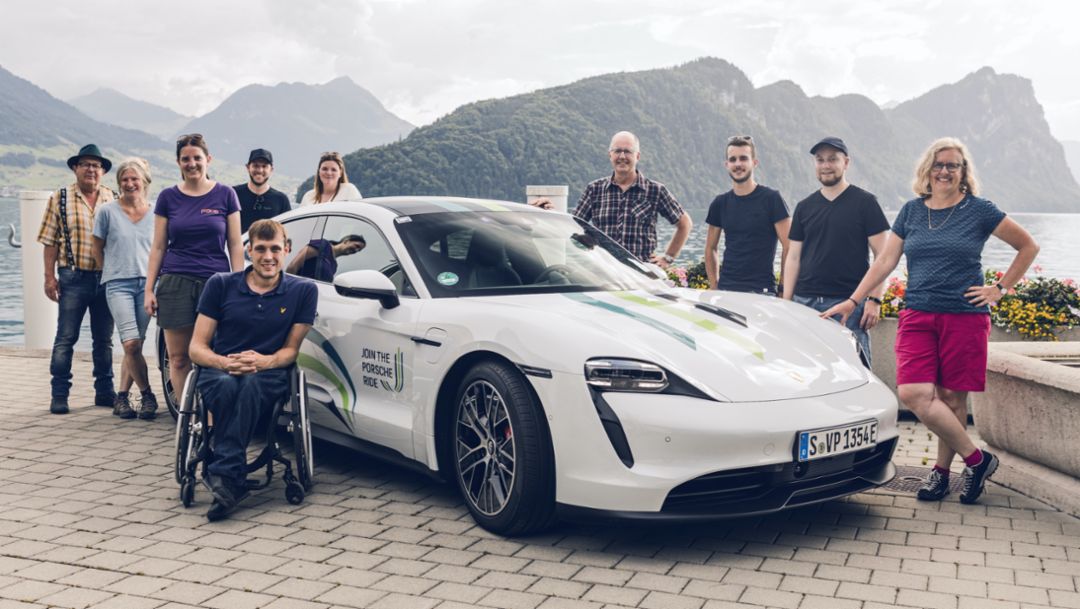With a lightning-quick swish of his steel épée, Oliver Lam-Watson reveals why he’s a master of his sport. “En garde!” can be heard echoing throughout the training facility in London. The Briton is one of the best wheelchair fencers in the world and is in the process of training for his next big event.
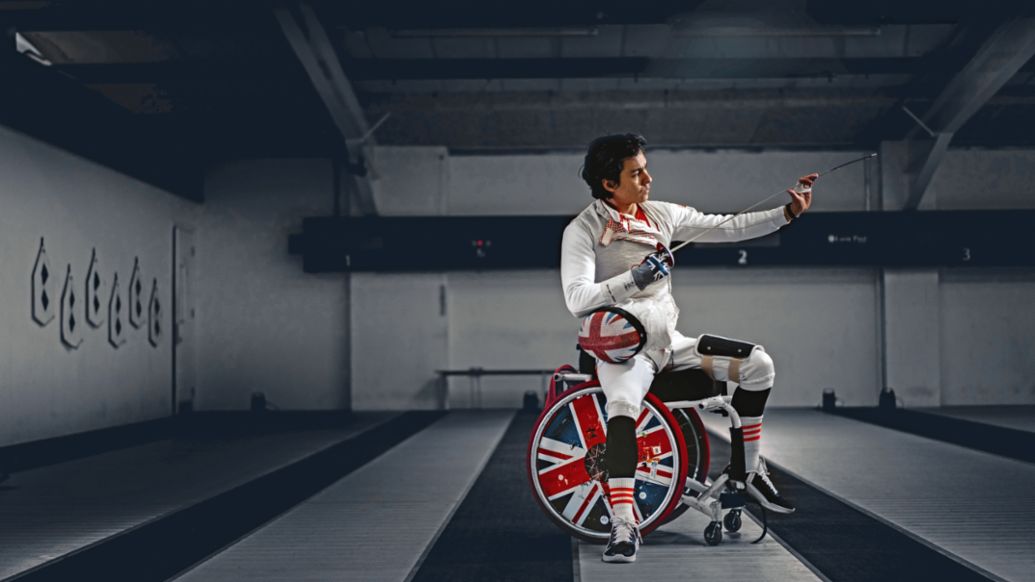
As shouts of “En garde!” echo around the walls of the London facility where he practices, his sword gleams silver in his right hand. His left clings to his wheelchair, which is anchored firmly to the ground, and a mask conceals the look of concentration on his face.
The unexpected flick-to-the-back maneuver is quick, followed by a strike against his competitor’s blade, a move referred to as a beat. Lam-Watson then counters with a subterfuge, deceiving his opponent with a body swerve – and contact! On this occasion, his sparring partner, who has use of both her legs, is no match for his skill. A groan, a murmur, and then a friendly handshake – the training session comes to an end and the masked fighter transforms back into a grinning athlete.
For Lam-Watson, fencing is a cross between chess and martial arts, requiring both mental and physical agility. The 29-year-old demonstrated the confidence with which he had mastered this skill when he won a silver medal in Team Foil at the Tokyo Paralympics in August 2021. Having already secured bronze in Team Épée, it marked his second victory in just a few days – and Lam-Watson finally had the opportunity to show everyone what he was capable of.

Hailing from South London, the Paralympian was born with a rare condition called Klippel-Trenaunay syndrome – a vascular disorder affecting his left leg. Others view this disability as a reason to point out all the things he cannot do. “I want to destroy that stereotype,” says Lam-Watson.
“I think that was the first time I considered myself to be different,” he says. “And that’s why I hated sports in school – it was something that separated me from everyone else and highlighted my differences. But I always shied away from the idea of disability. I didn’t talk about it, and never really confronted it.”
By his early twenties, now studying architecture at university, Lam-Watson still hadn’t fully come to terms with living with a disability – telling friends that the crutches were the result of a sports injury, or some other mishap. “I was sick of it dominating my life,” he says. “I just wanted to be seen as an equal. But after a while people realized that maybe it wasn’t a skiing accident.”

Then, at the age of 23, he decided to do something about it. “I thought, if I’m going to live with this, let’s see what I’m capable of.” So he joined a gym, and, soon after, a friend convinced him to take part in a Spartan Race, in which competitors have to tackle a tough, military-style obstacle course. “It was kind of scary – 15 kilometers and a lot of mud and water, all on my crutches,” recalls Lam-Watson, who went on to complete six more of the events.
“I was quite pleased with myself,” he says. “But then I went to a doctor to get checked over, just to make sure I was still OK to do these races, and I remember he said to me ‘well that’s not a real sport, is it?’ I was really annoyed – I’d achieved what I felt was quite a big deal, only to be told that it wasn’t a sport.”
Determined to prove the doctor wrong, he began looking that very same evening in 2017 for Paralympic sports that he could take on – and quickly. One discipline that immediately stood out was wheelchair fencing.
So he called every fencing club in London until he found one willing to take him on. His first training session was just a few days later – and soon he was having between five and six lessons a week.
Six months later, Lam-Watson was selected for his first World Cup in Hungary. “I was a complete rookie and I got completely smashed by some of the world’s best fencers. It was a really steep learning curve,” he says. Undeterred, he kept up his training and worked even harder – and he didn’t have to wait long to enjoy the fruits of his labor.
“It’s no one else’s right to tell you what you can or can’t do.” Oliver Lam-Watson
His first medals in the 2018 World Cup were soon followed by his successes in Tokyo. The absolute highlight and an extraordinary experience. It’s an incredible story, and one which Lam-Watson hopes may inspire others. More than that, he hopes he can help completely reshape how people view disability, and has already established a successful online following, including a YouTube channel where he tackles many issues ranging from anxiety to amputation, as well as posting behind-the-scenes videos from the Paralympics and, more recently, clips of him doing skateboard tricks.
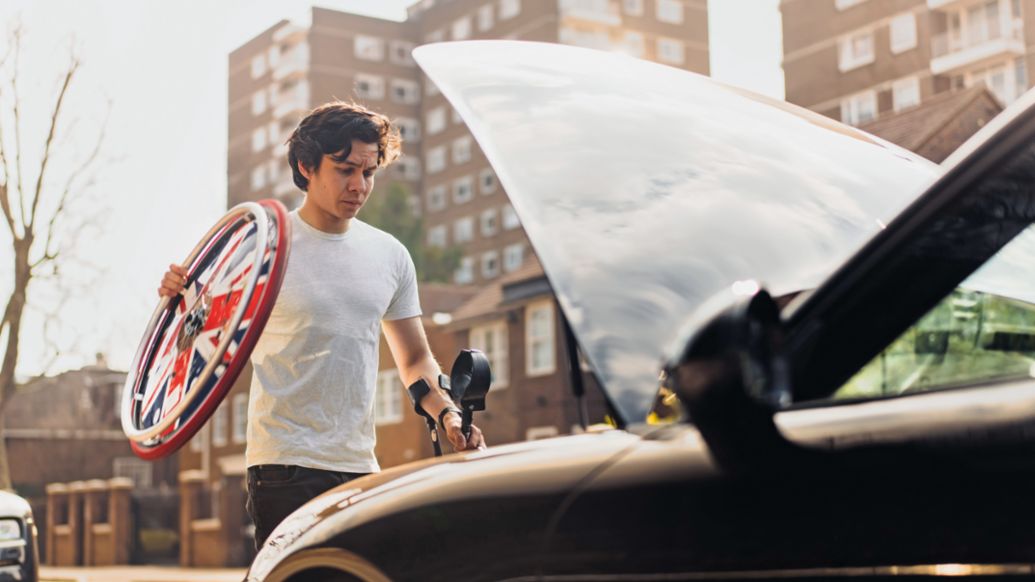
He also shares some of the many photographs he takes – a passion he developed during his studies. “I got an old Nikon FM2 film SLR and spent my lunchtimes in the darkroom,” he says. “Photography is an escape. It gives my mind and body a rest, away from professional sport.
”More than anything else, he likes to capture everyday moments. He can often be found walking the streets of London’s Soho district, his camera at the ready. Sometimes it takes him a couple of months to shoot a single roll of film. “But then (when I have it developed) it’s like the images become memories of those little moments I’d almost forgotten about.”
Breaking down barriers and change perceptions
“I use social media to help break down barriers and change perceptions,” he continues. “When some people see a disabled person, they think of hospitals, crutches, wheelchairs. But it’s not true. I can dress just as cool as you and I can be just as strong as you – or however you measure yourself against society. Just because I have a disability, it doesn’t make me a different person.”
Lam-Watson is no stranger to negative comments and discrimination – both online and in real life. The problem, he explains, is that people with disabilities are always told what they can’t do – and rarely what they’re capable of. “I’m not saying that everything’s possible. But it’s no one else’s right to tell you what you can and can’t do – it’s for you to find out.”
For the medalist, this is especially true when it comes to cars and driving. For the past two years his daily driver has been a Porsche 911 GT3, which comes as a surprise to many people. Especially when they see him parking in a disabled parking space or displaying his blue disabled parking pass in the windshield.
“I can drive an automatic car,” says Lam-Watson. “That’s why my GT3 has a PDK transmission. But you can also have a sports car fitted with hand controls.”
As we drive through London, Lam-Watson is in his element at the wheel. “The GT3 gives me the ability to do things I can’t always do with my own body – to go fast, to be nimble and agile. It feels like an extension of me.”
Lam-Watson has found his balance as a successful professional athlete. But he doesn’t plan too much for the future. “That would take me out of the moment,” he explains. “My attitude is, if you want to do something in five years’ time, why not just do it now?”
